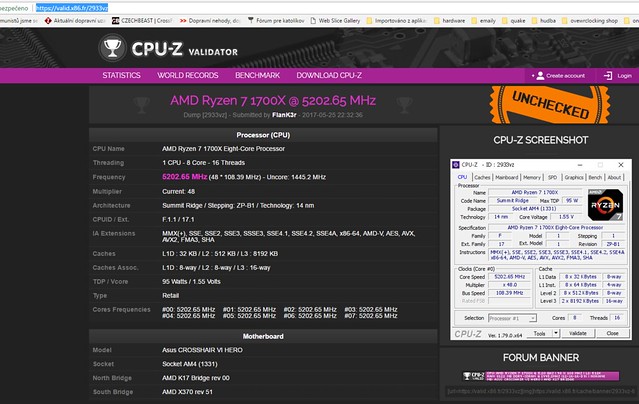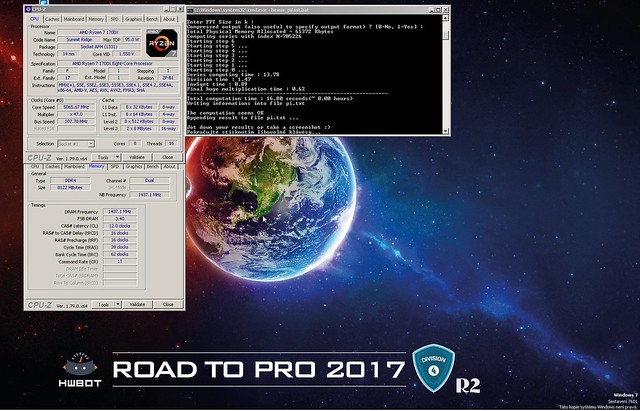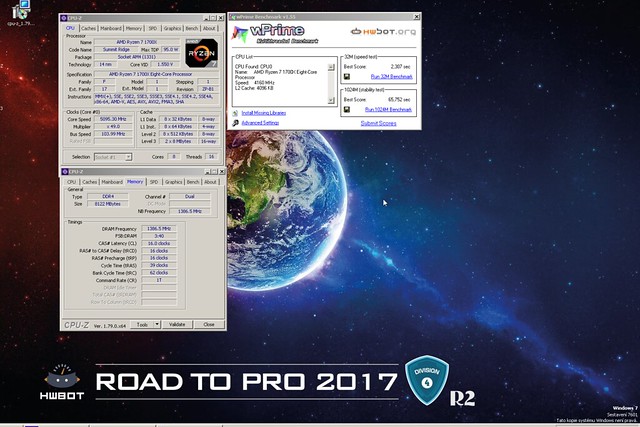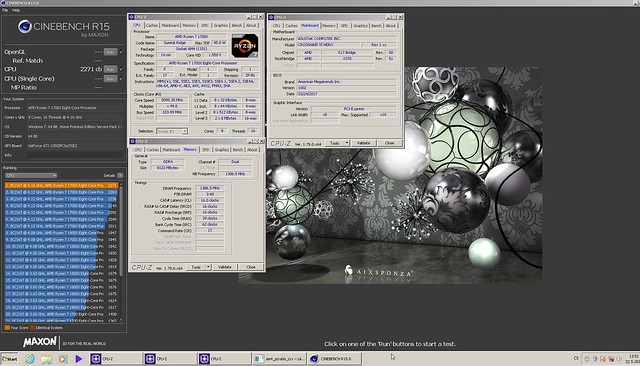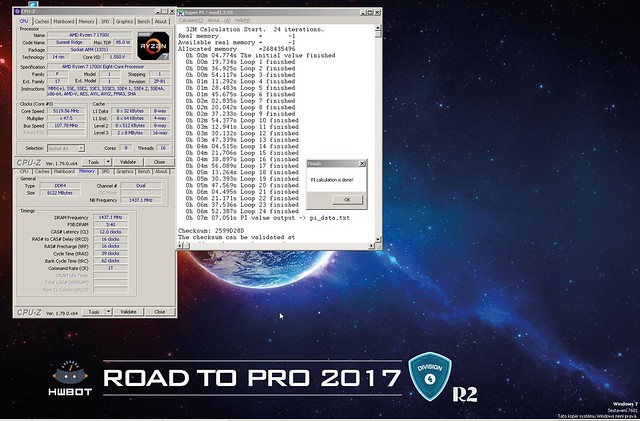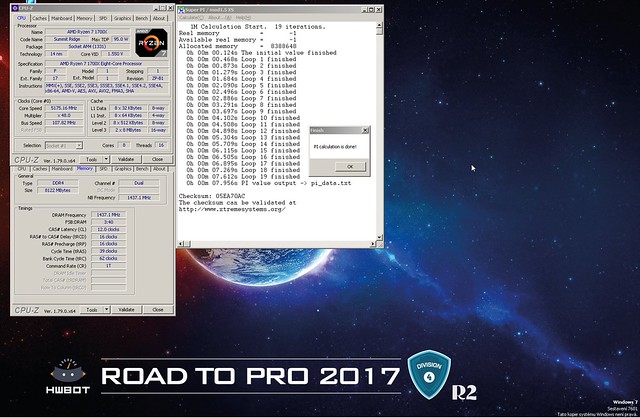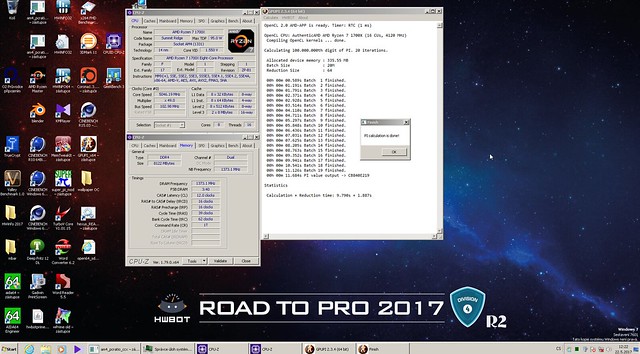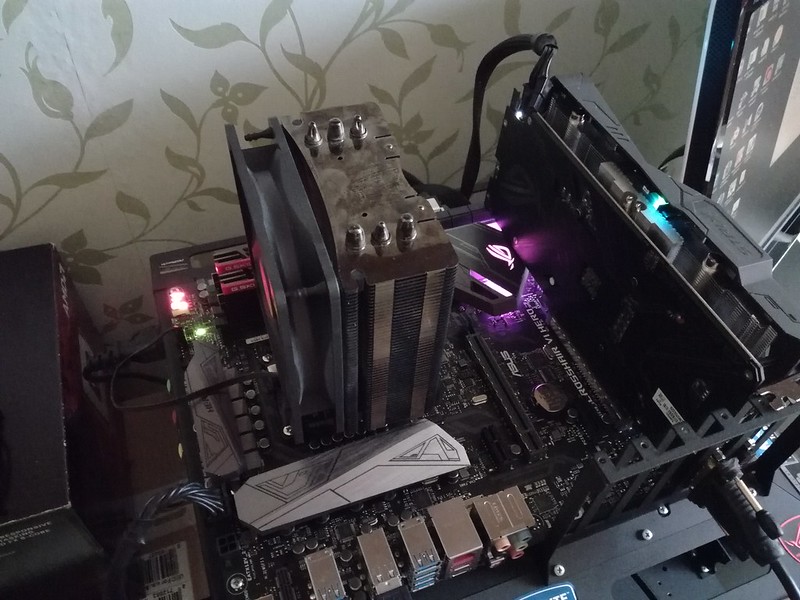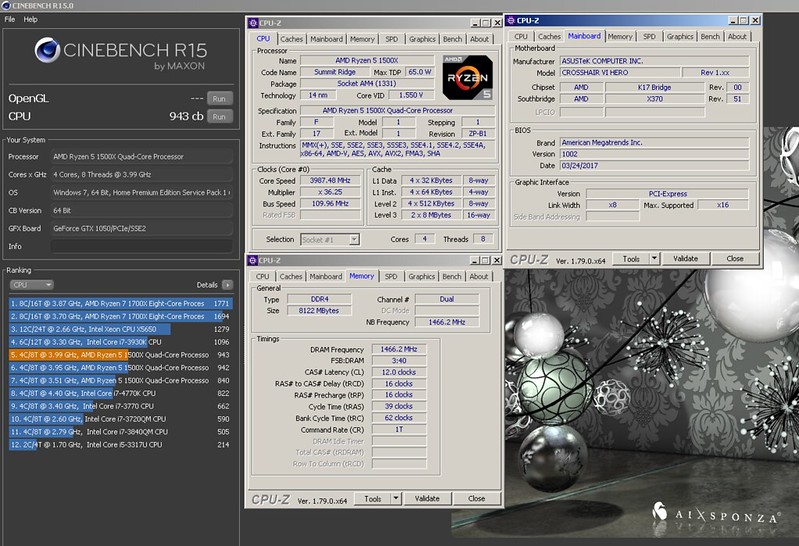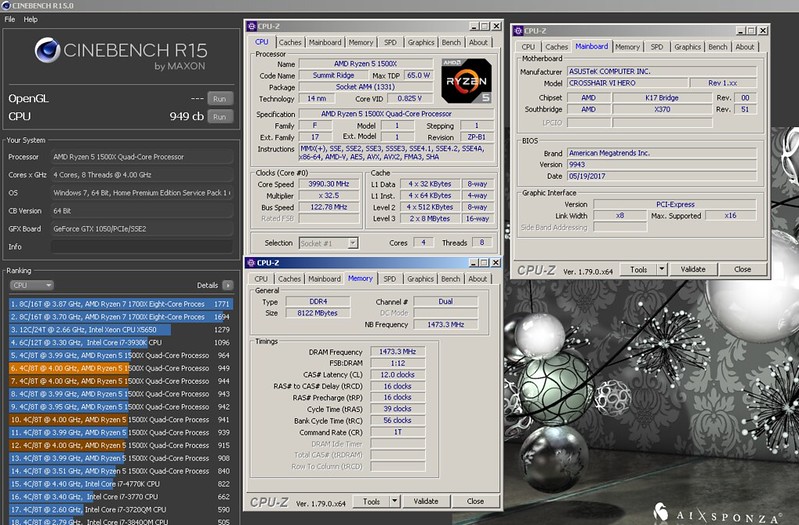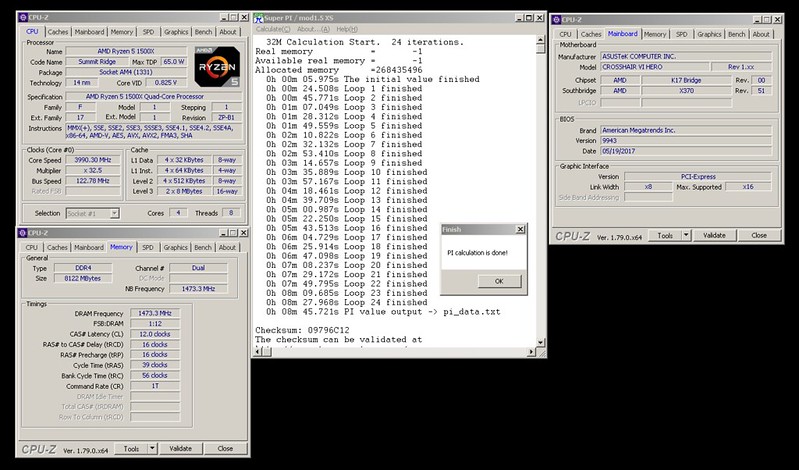Most liked platform for me was AMD Dragon. I was surprised at 2010 after the launch AMD Phenom II X6. Yes, its 7 years ago, memories...Today we have new Crosshair motherboard. Sixth generation named Crosshair VI Hero.
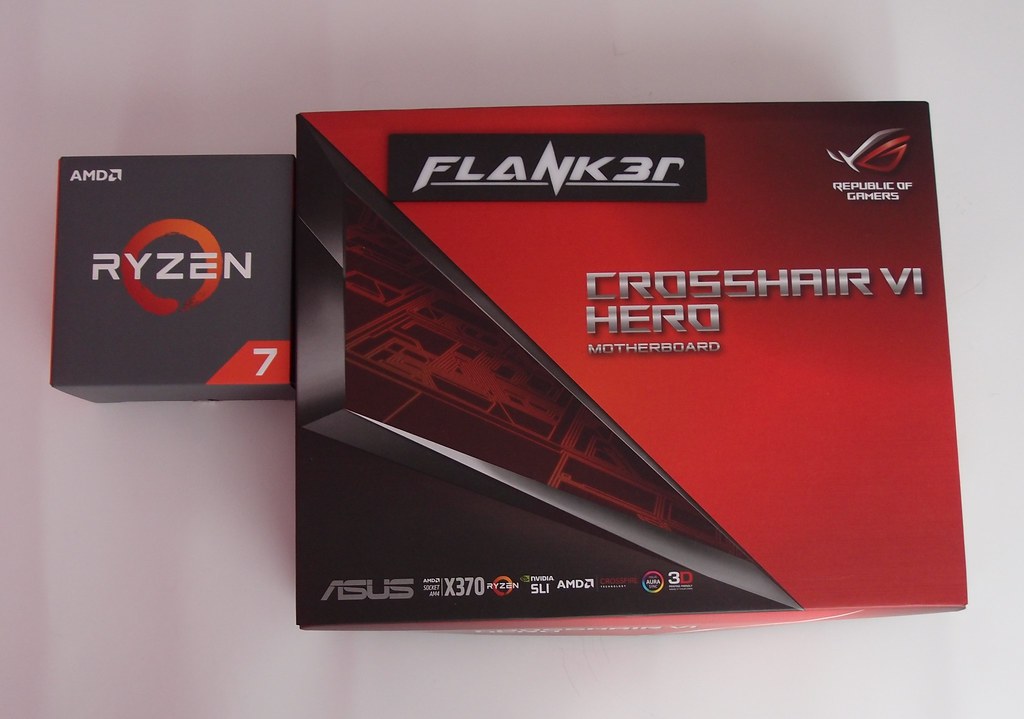
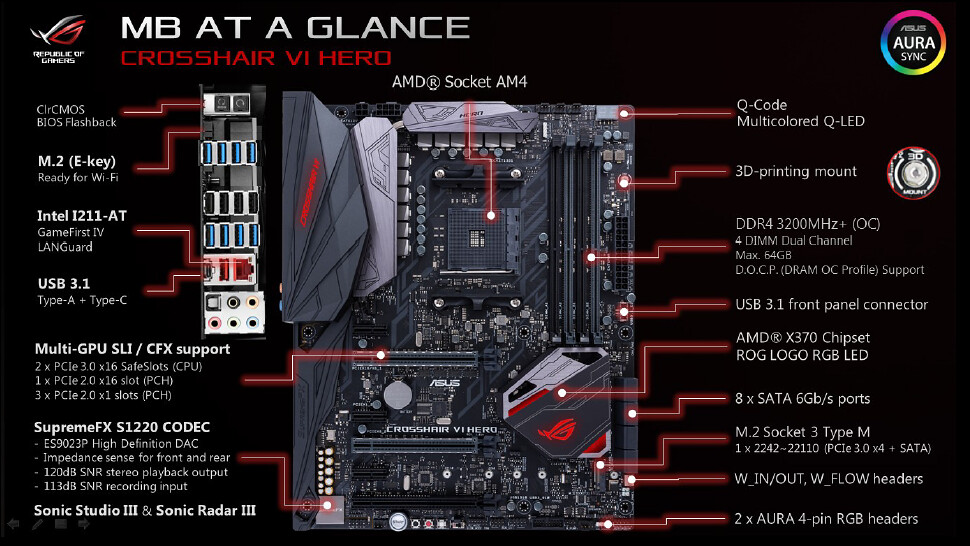
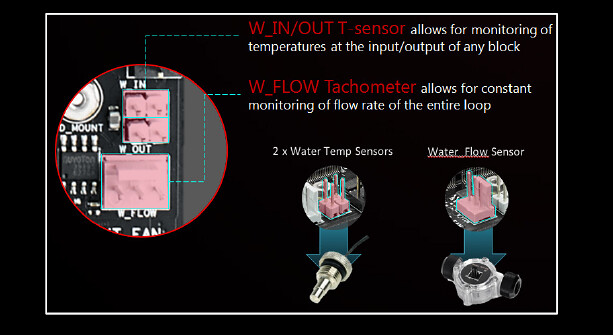


Everything what you need to know about Crosshair VI Clock generator is great info for us!
Clock generator is great info for us!
Motherboard - new Crosshair
It was more clear, I must have some Ryzens and this motherboard. I was in silence, first BIOSes was not ideal and BIOS chip at my board was broked. Ryzen 7 1800X is my AIO rig. But I bought also Ryzen 5 1500X and Ryzen 7 1700X. And have borrowed 1700 non X + 1600. I tested quickly only 1800X and 1700X, a little 1500X.
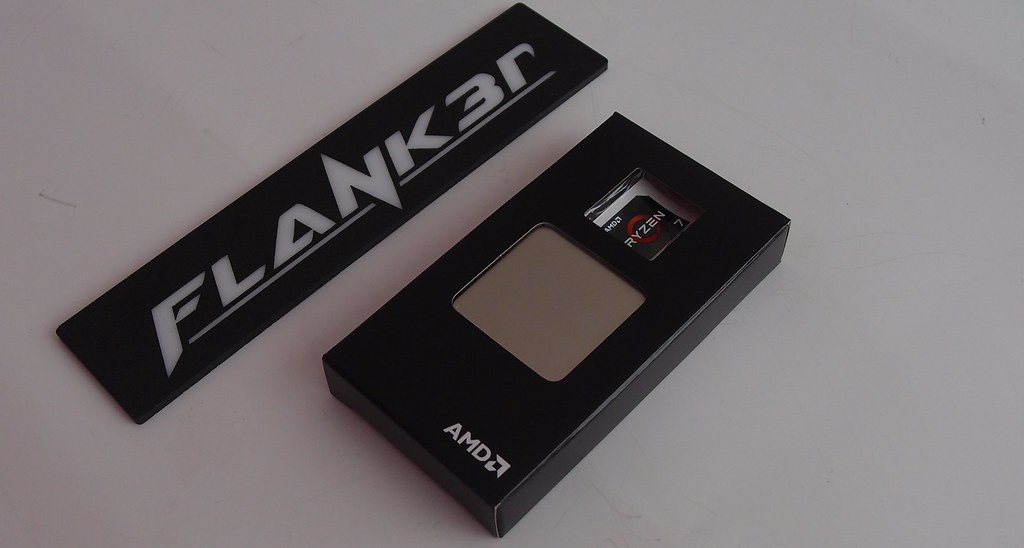
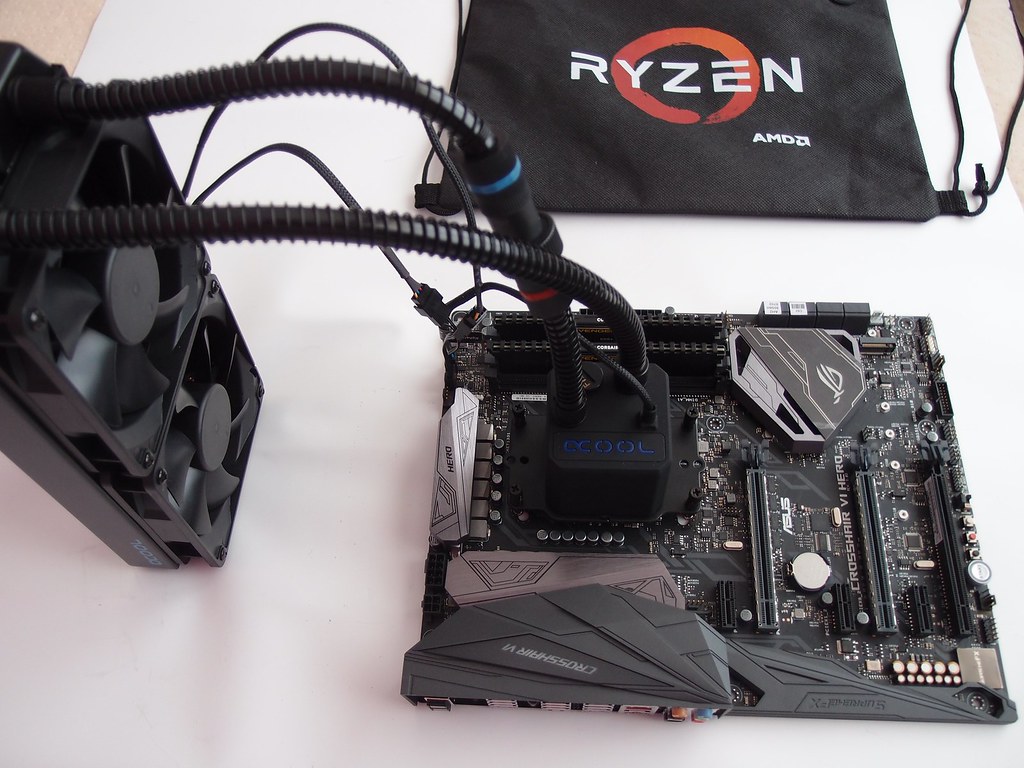
The main benchtable PC - 1800X inside and Crosshair with Alphacool Eisbaer cooling. Type of DRAM Im using HyperX Savage, Corsair Dominators Vengeance or TridentZ from GSkill. Unfortunatelly, all kits are not B-die. My favourite BIOS for this board are 1001 and 1002.
Whats inside the box?
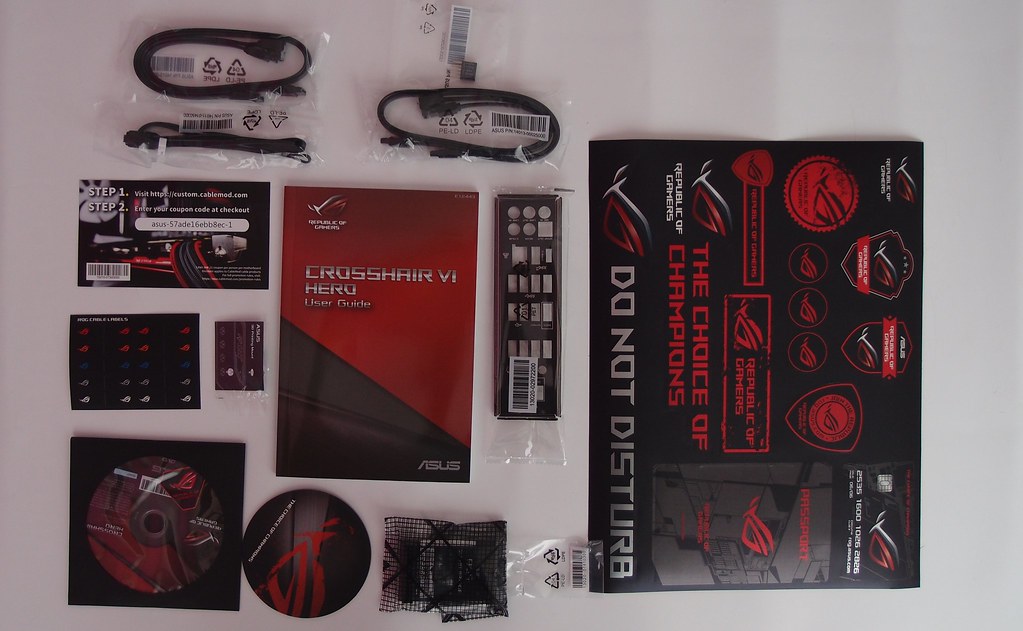
Many good stickers , SATA cabels, ROG SLI HB bridge, coaster for drink etc., discount for sleeve PSU cables, RGB extension cable, installing DVD, paper manual and IO cover
, SATA cabels, ROG SLI HB bridge, coaster for drink etc., discount for sleeve PSU cables, RGB extension cable, installing DVD, paper manual and IO cover
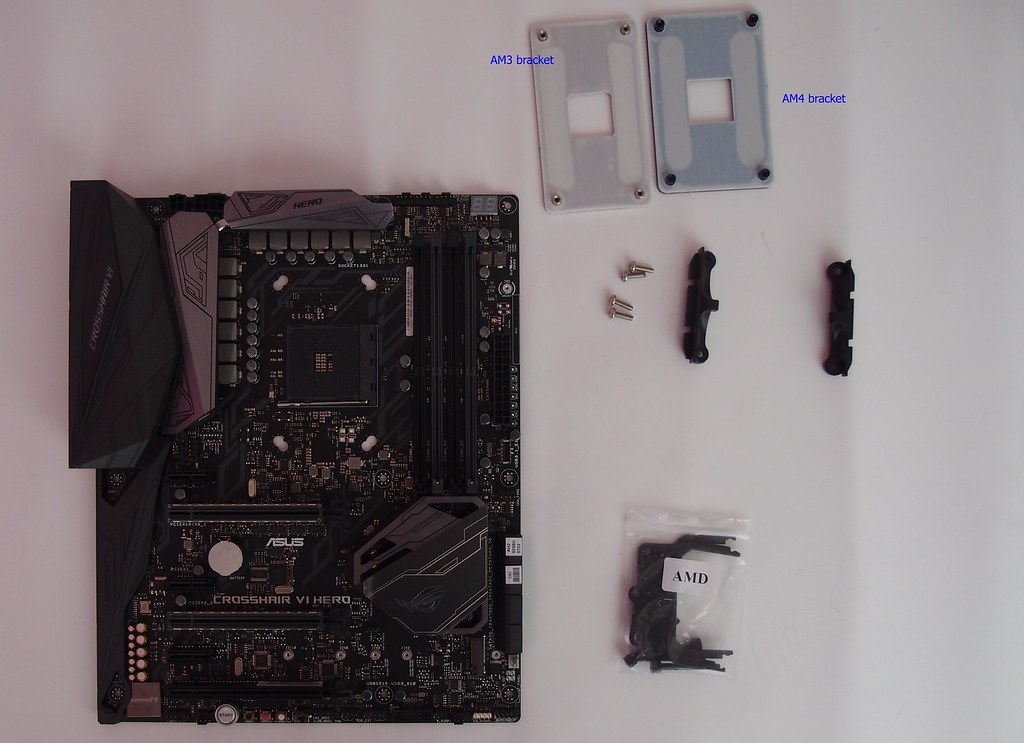
This is perfect inovation. Crosshair VI Hero has holes for AM3 and AM4 brackets .
.
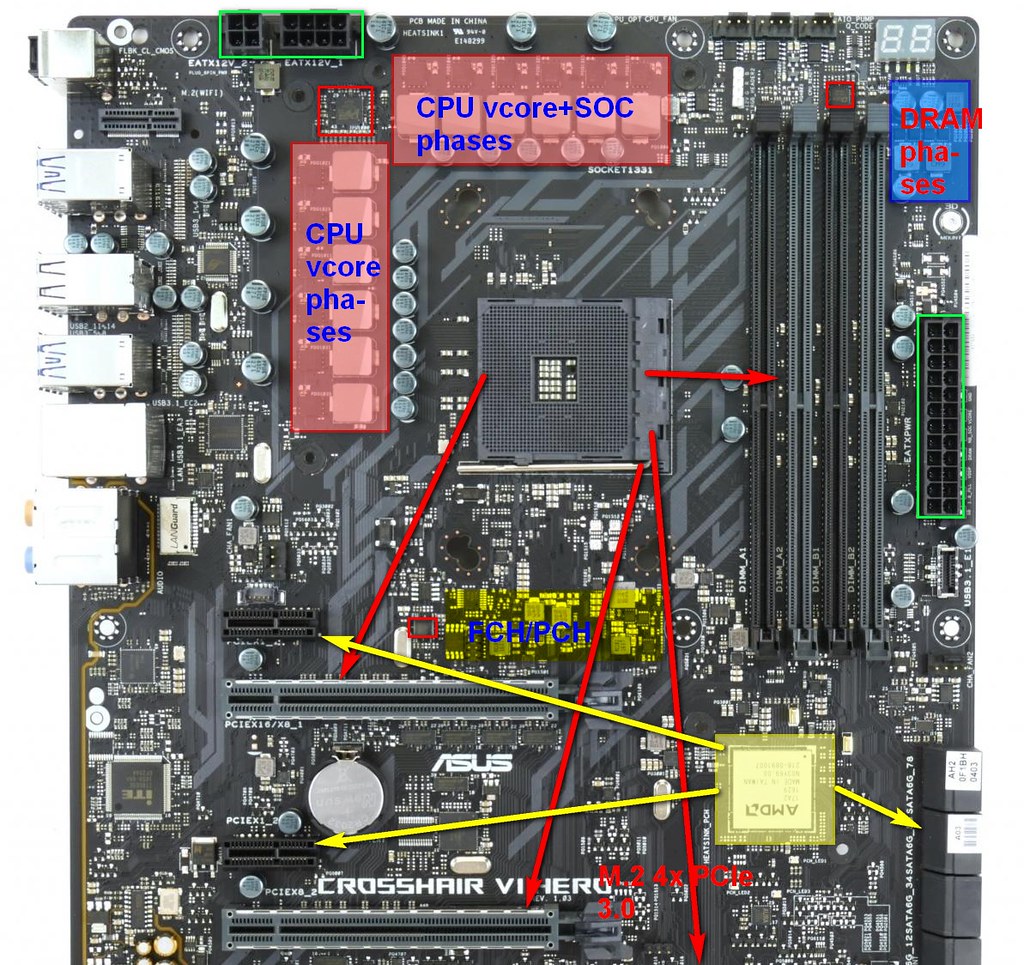
The board has solid digital power circuit, which is including phases for CPU=vcore+SOC part. In blue is it digi controlled 2 phases for DRAMs. Remember, if you are use Ryzen, it has 16x PCIe 3.0 links for GPUs and extra 4 directly for M.2 NVMe discs. Others PCIe are 2.0 and interconected with Promontory FCH chipset.
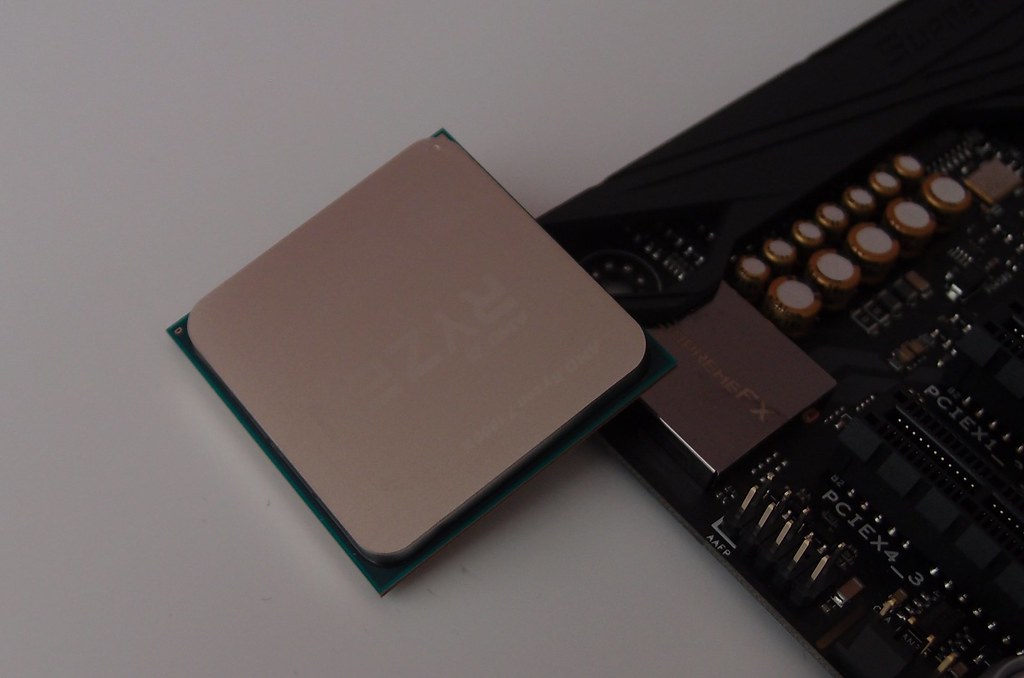
SupremeFX with latest ALC1120A codec, some Japanese cappacitors, ampfs and separated lines in PCB
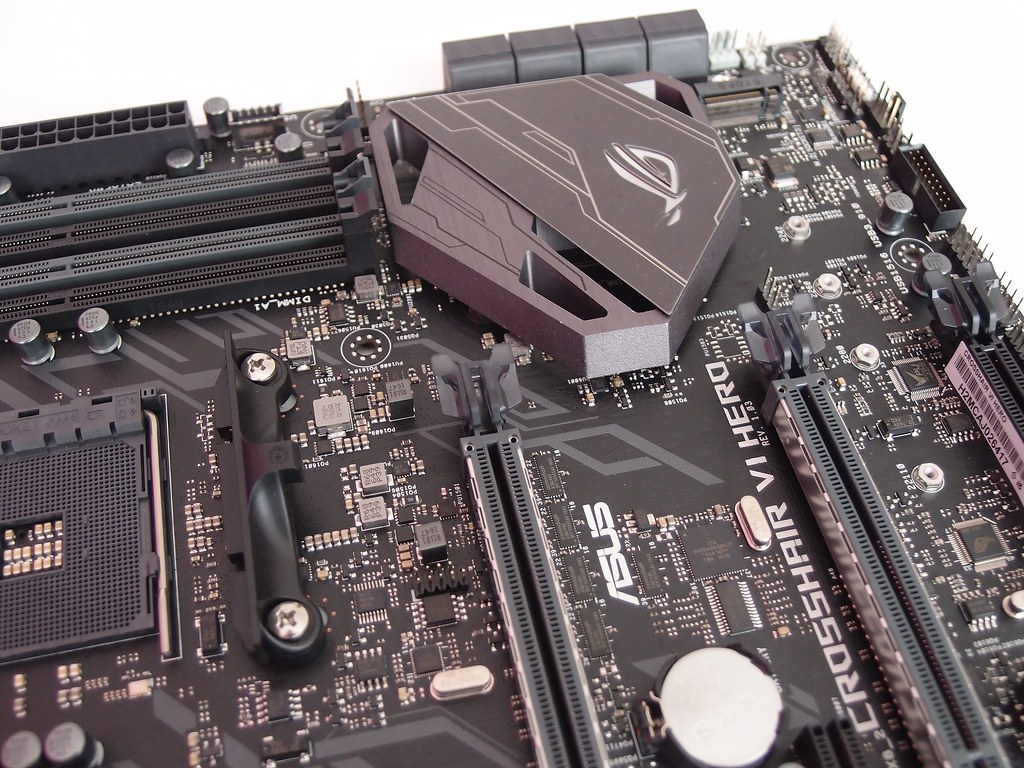
Nice designed pasive of PCH. The board looks like really nice, similar as Maximus IX Hero sister. M.2 port is almost bottom, its smart, because its not between SLI/CF slots for GPUs. NVMe M.2 discs are a bit hot, specially in 512GB or higher capacity
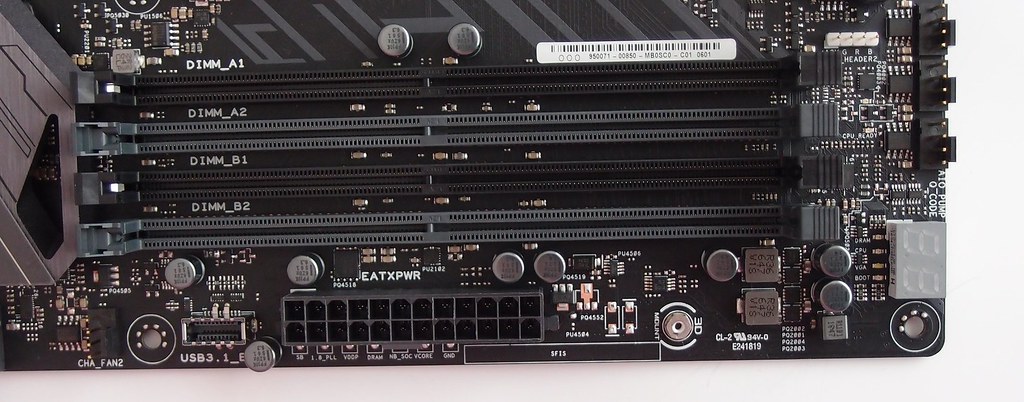
Ryzen is supporting up to 64 GB DDR4 memory (A2+B2 are primary slots). Ussually you can use 3200 MHz, but at this Crosshair board its possible to get around 3600 MHz or higher for some benchmarks! But you must change BCLK and 2400/2666 MHz in BIOS Near the 24-ATX pin on the left you can see modern front USB3.1. In this area are measuring points of voltage. And post display.
Near the 24-ATX pin on the left you can see modern front USB3.1. In this area are measuring points of voltage. And post display.

OC part is at the bottom. Its change against Common opinion. I think, its better to have it on upper the right corner. Reason? If I will use for extreme OC last PCIe, after I have not good access to the buttons. At photo you can see classic START, small reset, safe and retry buttons, LN2 jumper and slow mode switch. Everything what the extreme overlcockers need to be happy. The board has support for ROG OC panels. And for casemoders there are also two RGB connectors.
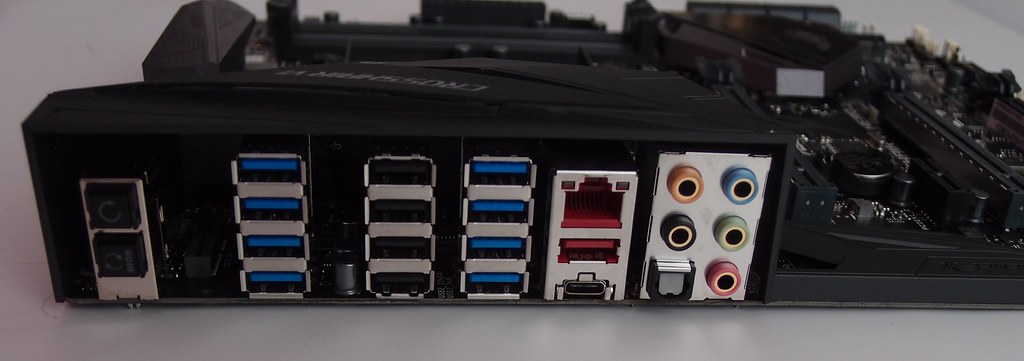
IO part, so many USB ports, including 2.0, 3.0 and 3.1 I like it. But one PS2 could be here also. Function buttons are BIOS flashback and clear CMOS.
I like it. But one PS2 could be here also. Function buttons are BIOS flashback and clear CMOS.
Stock vs OC AIO cooled benchmarks
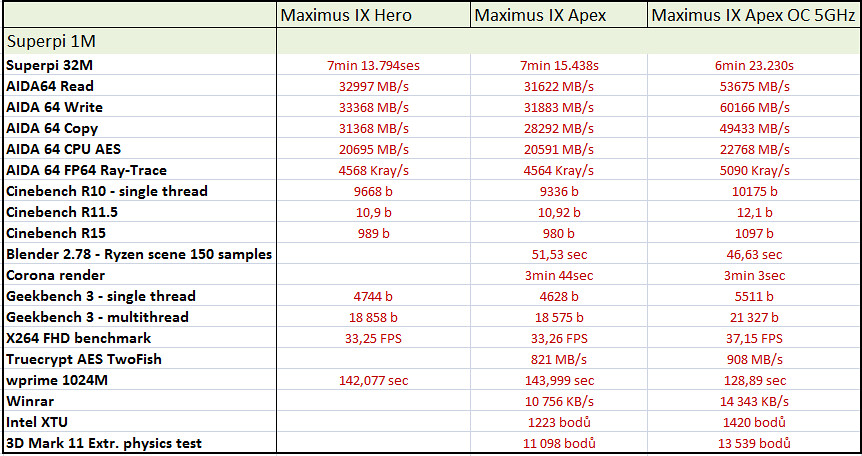
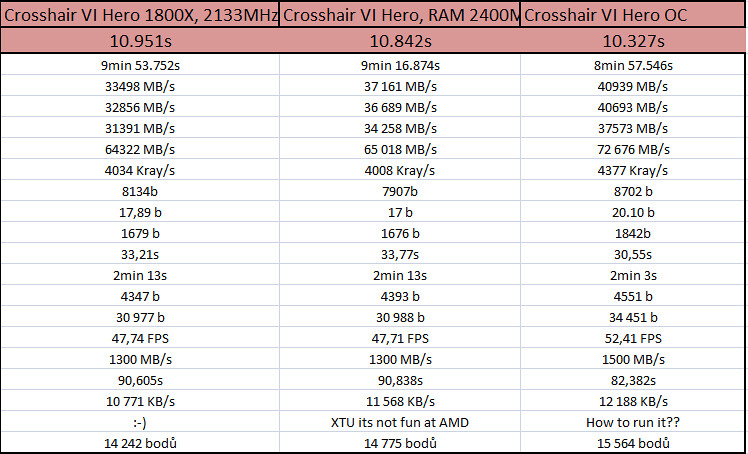
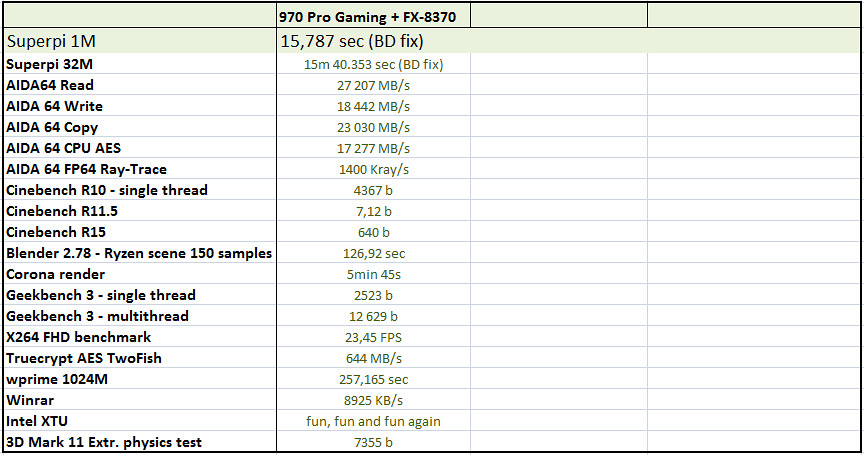
I tested only few benchmarks. But you can see big impact in IPC for AMD. Compared it with FX-8370 in table. I did also quick stable OC for 30min in AIDA. I got 4074 MHz with Ryzen 7 1800X. Benchmarks are doable at 4100 MHz also.
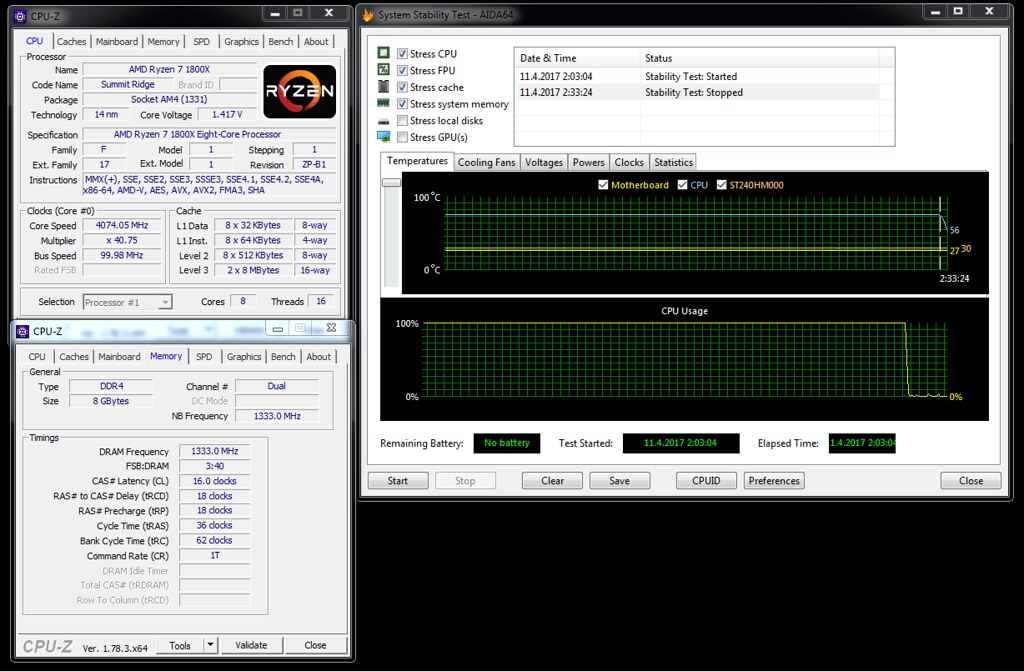
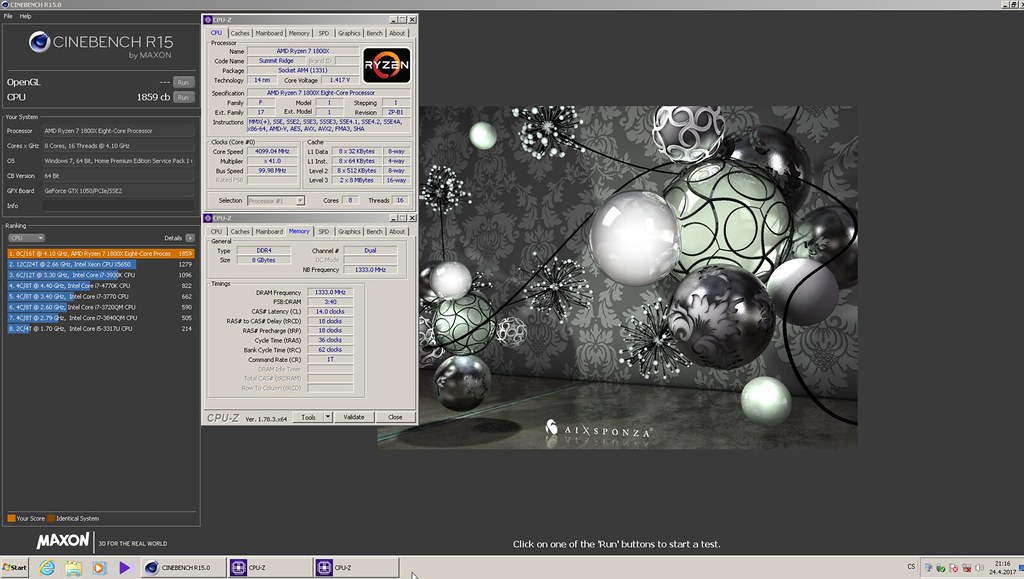
Crosshair IV Formula + AMD Phenom II X6 1090T BE and LN2
Few days ago I was at dealers day as ROG overclocker. I wanted test my favourite platform AMD Phenom II and new Ryzen. I started with old one, with Thuban. I must say, it was really fun and I used non tweaked Windows 7 for it.
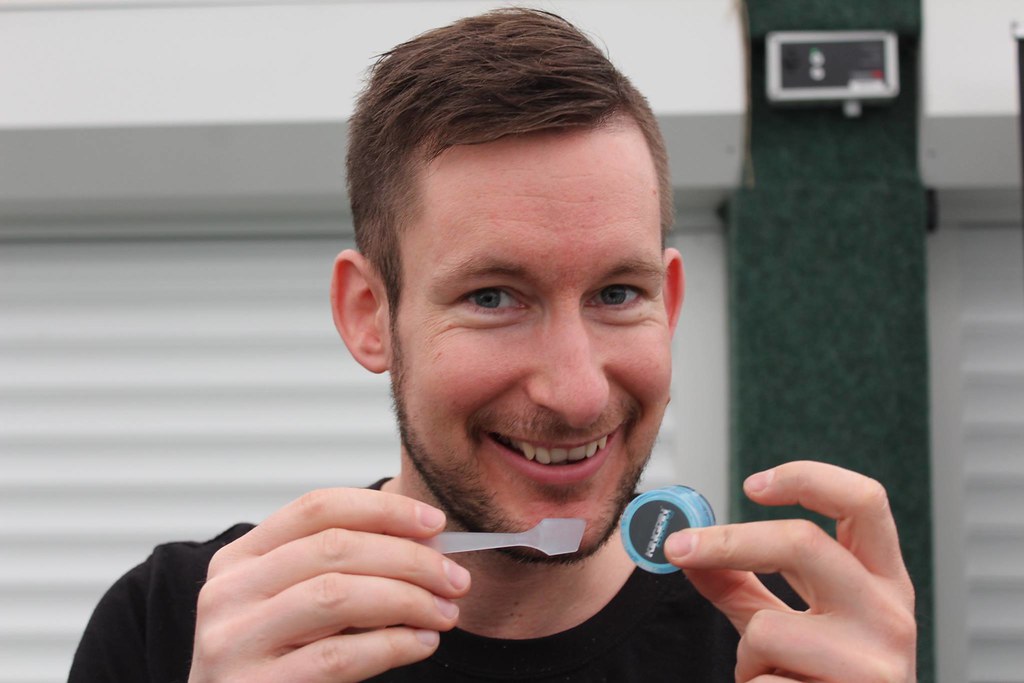
Kingpins thermal paste for LN2. Its better than I thought.
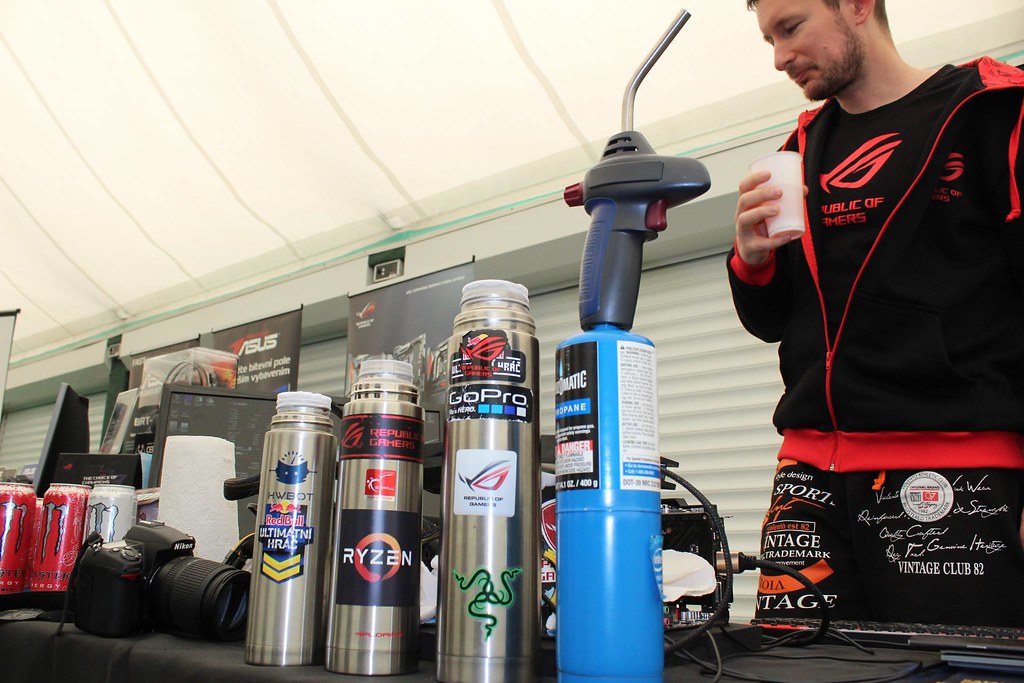
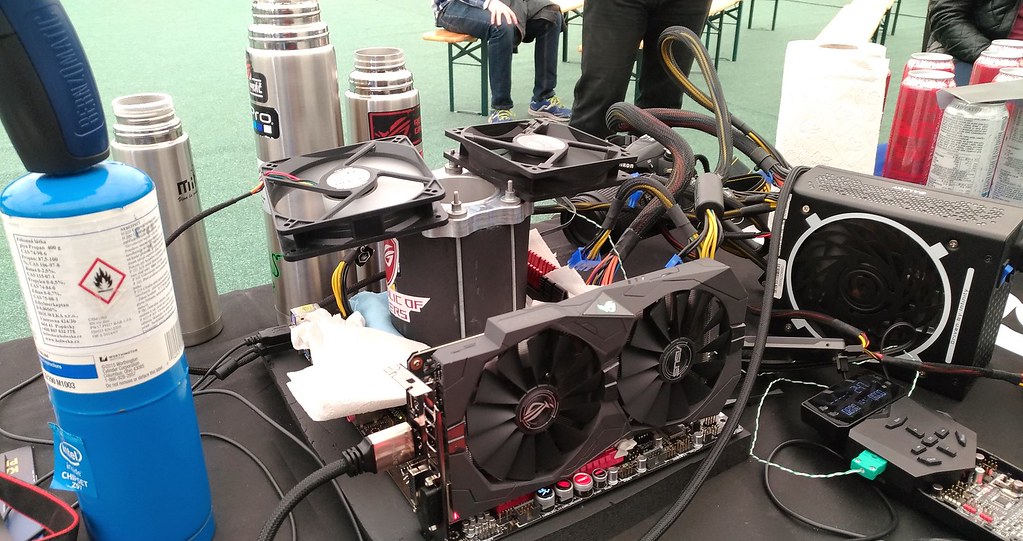
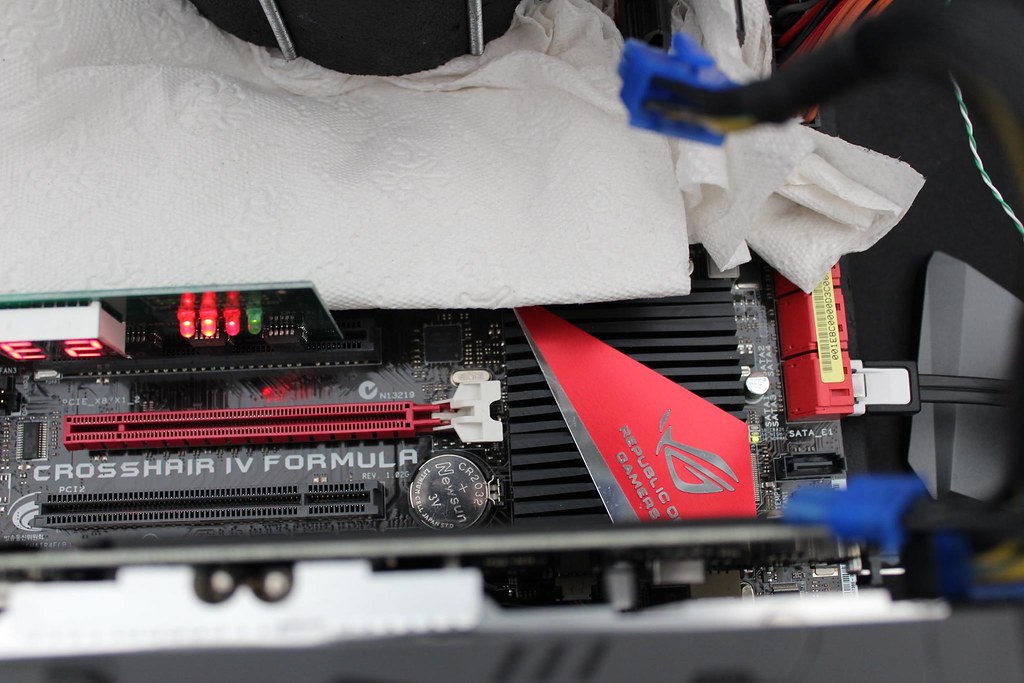
Isolation with old classic method and many papers. I used also OC panel for read the temperatures and PCI post card into the motherboard.
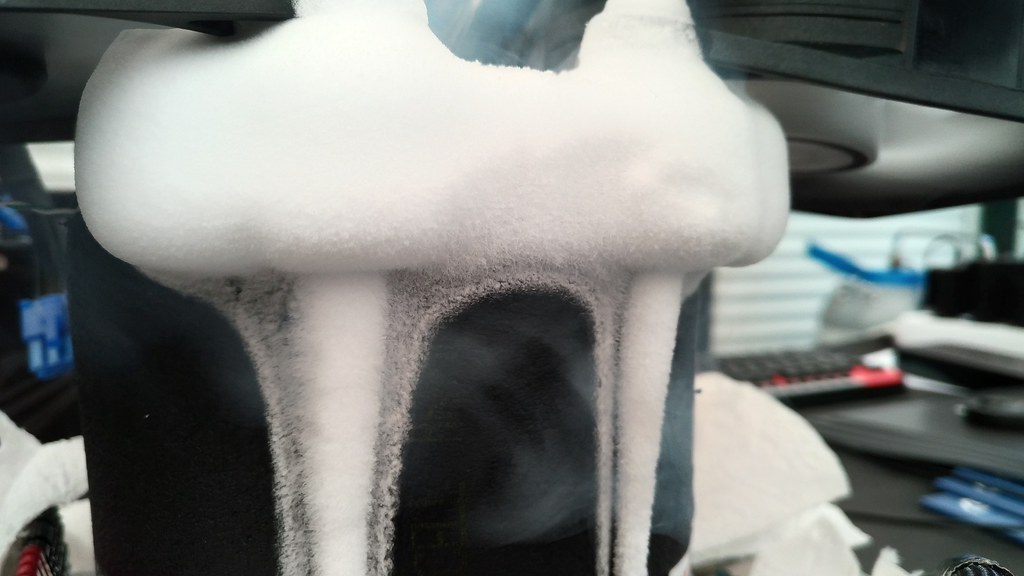
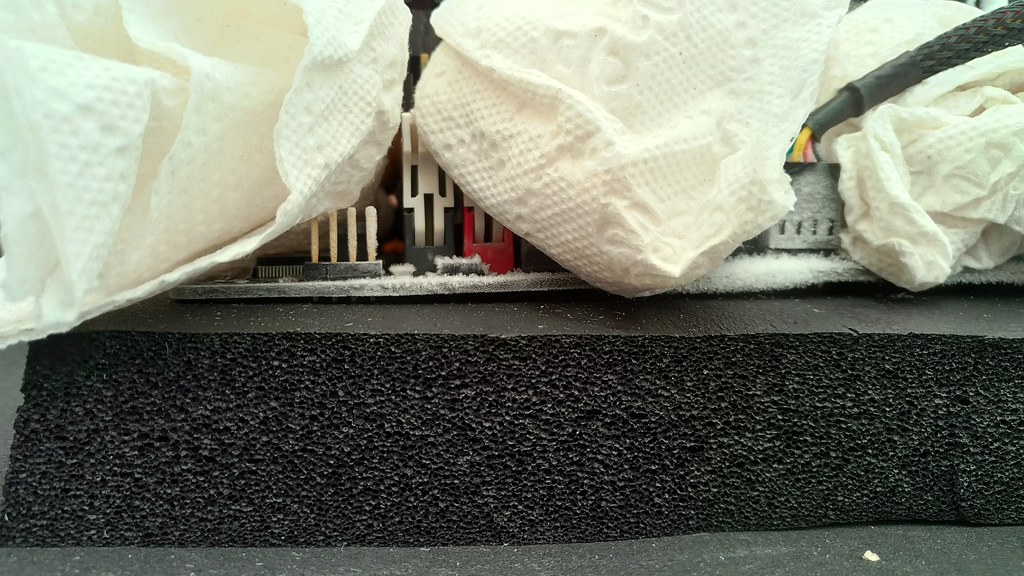
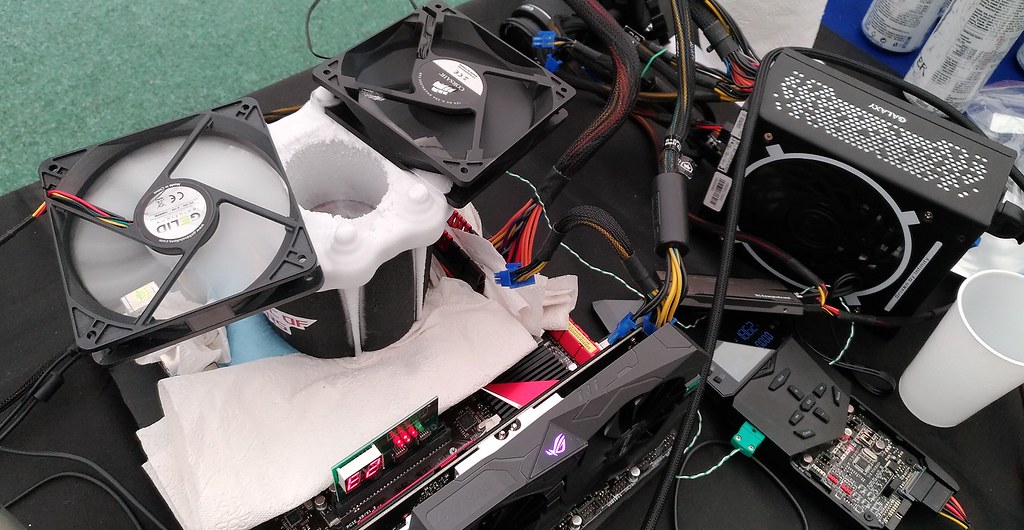
Temperatures minus 186C was the max on sensor via OC Panel.
Time for some results. The cores of CPU was similar, the best cores was first, third and fifth. So for some benchamrks I could use mix of 5900 and 5800 MHz , example for Cinebenh R11.5. I was a bit disappointed from Superpi, I thought, this CPU could be 6500+ MHz chip, but it not happens...
, example for Cinebenh R11.5. I was a bit disappointed from Superpi, I thought, this CPU could be 6500+ MHz chip, but it not happens...
Wprime 1024M and 32M
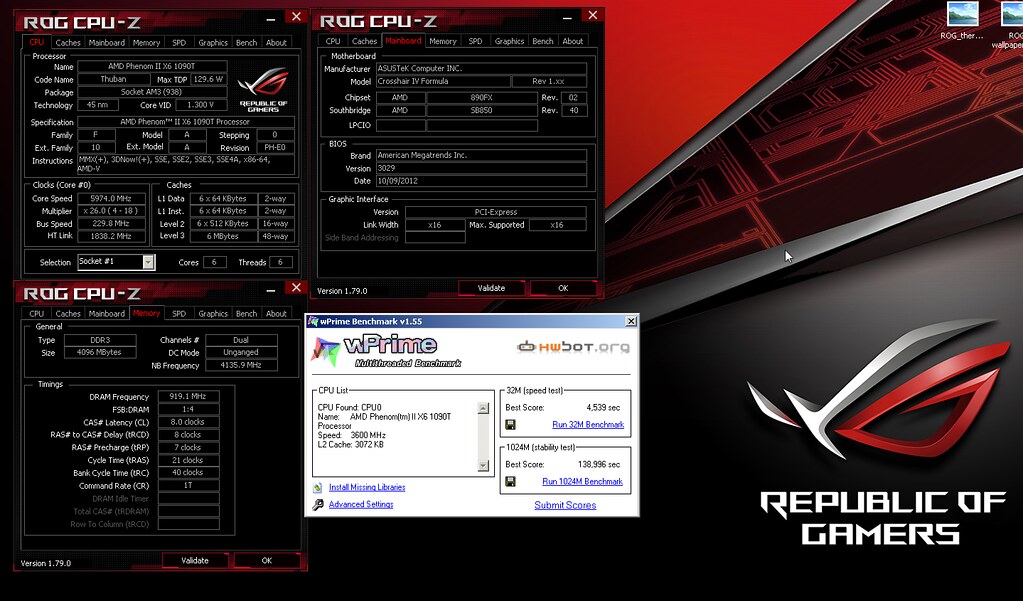
Cinebench R11 and R15
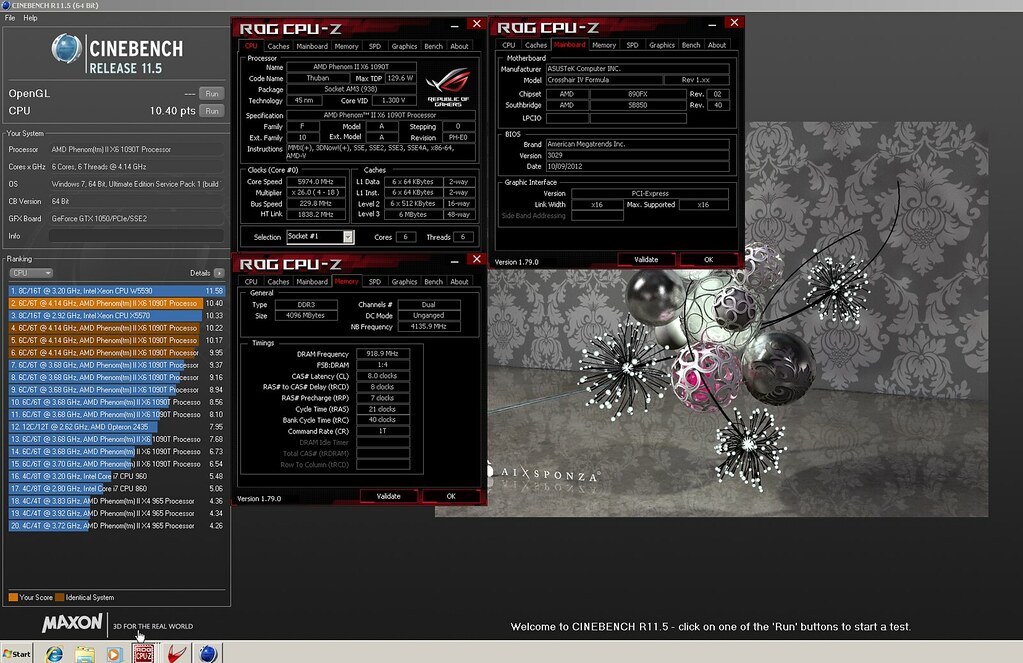
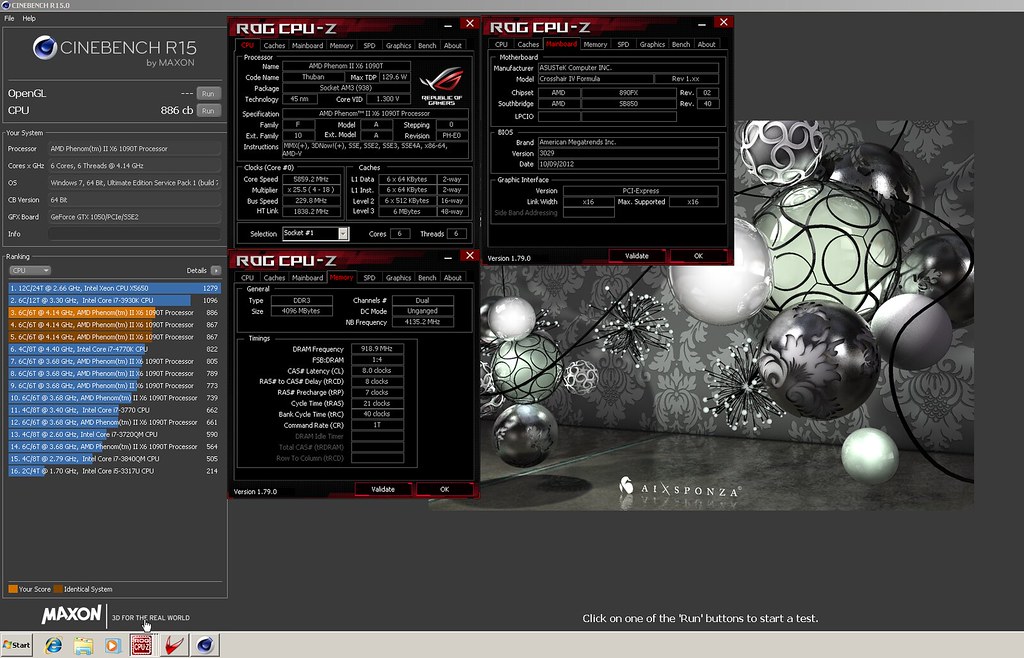
Superpi
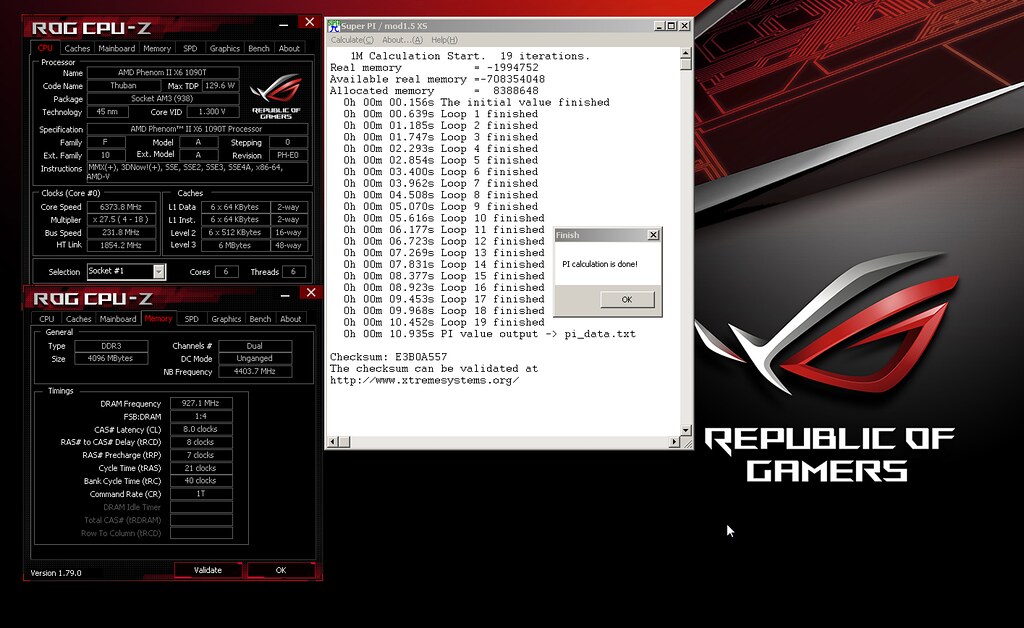
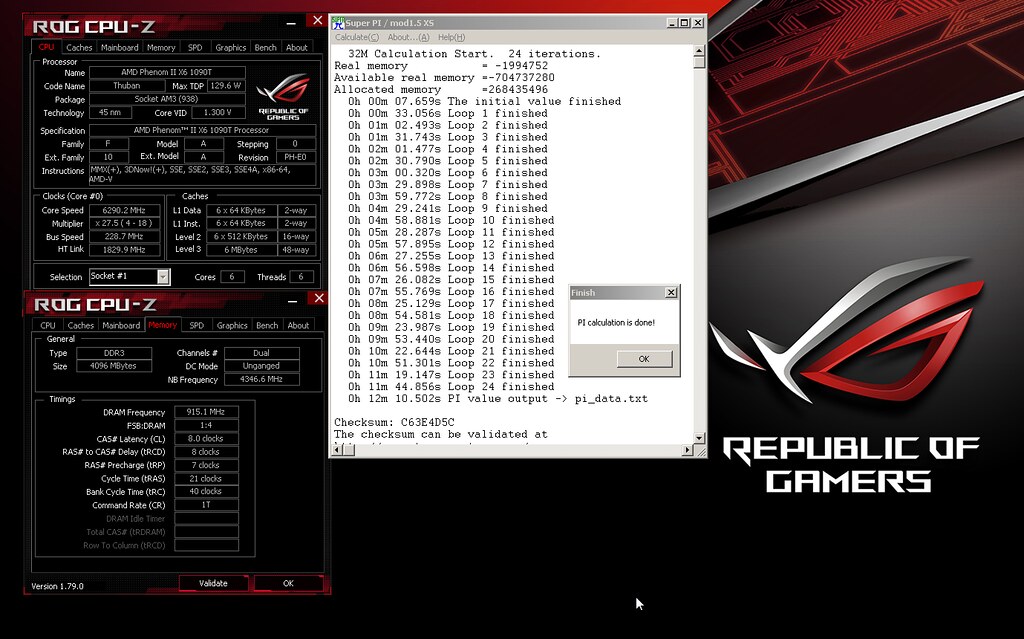
Geekbench
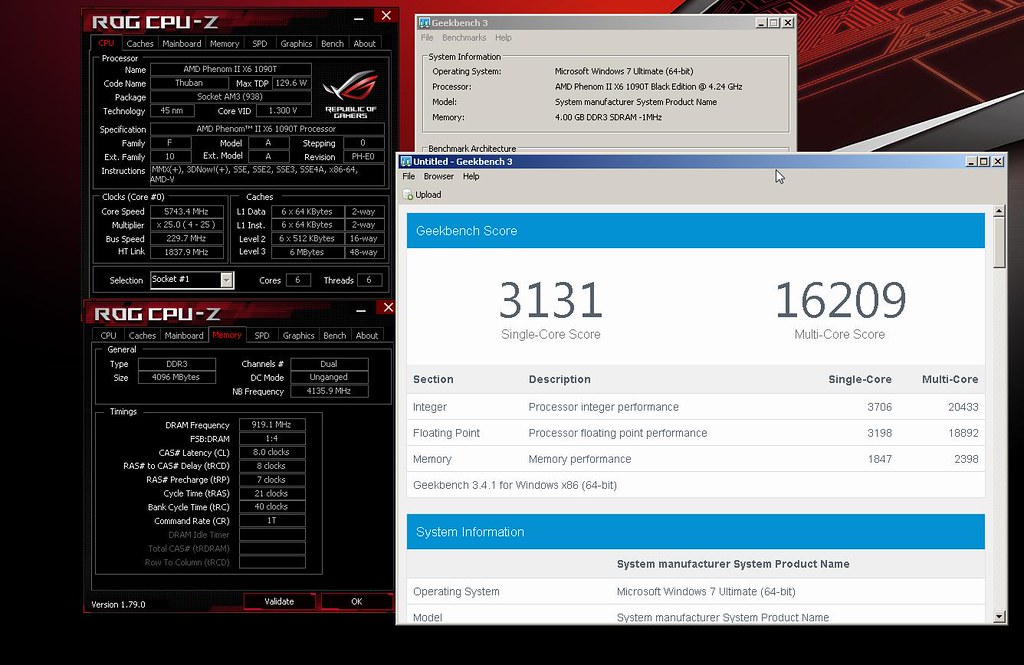
Max clock ( I had almost 6500 Mhz, but file is corupted)
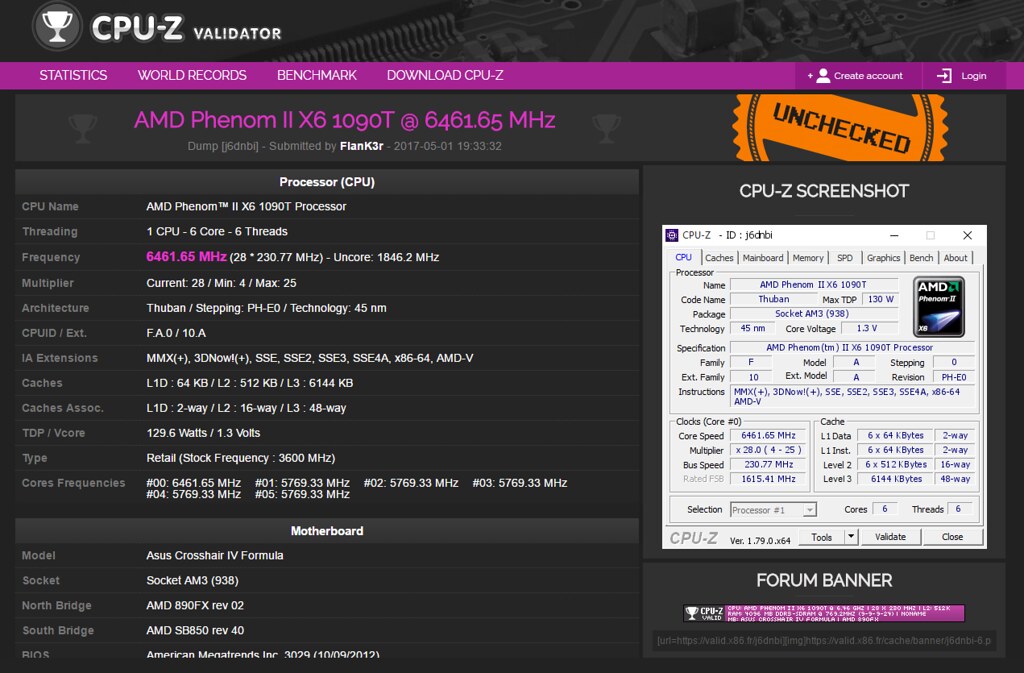
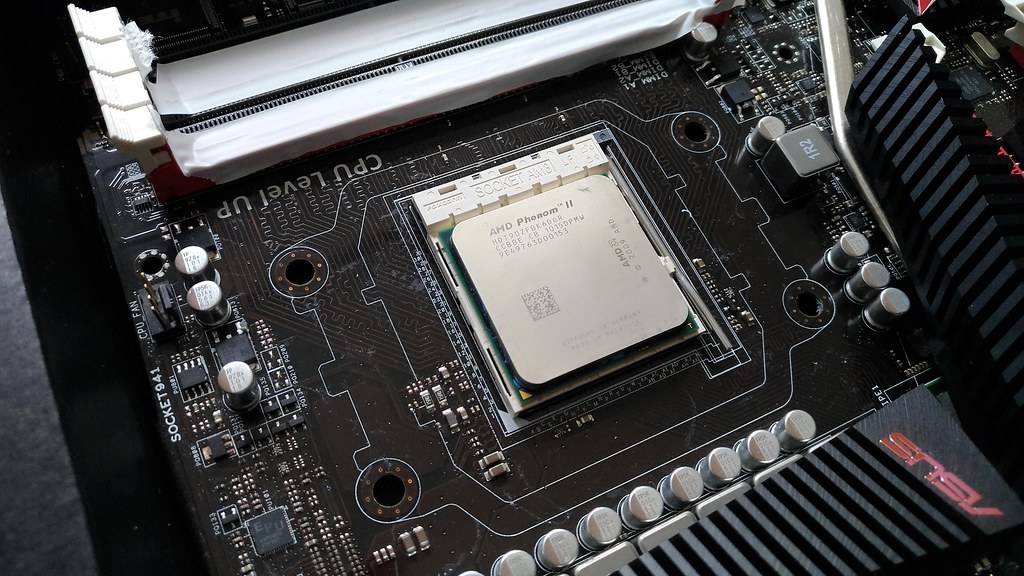
That was my Thuban And Chew* has the right in this case. This sample is really great on AIR, but only good at LN2...My 1100T BE is with LN2 better extra 300 MHz. Still, it was fun and most of liters was consumed by Thuban
And Chew* has the right in this case. This sample is really great on AIR, but only good at LN2...My 1100T BE is with LN2 better extra 300 MHz. Still, it was fun and most of liters was consumed by Thuban  ¨
¨
AMD Ryzen 7 1700X and LN2
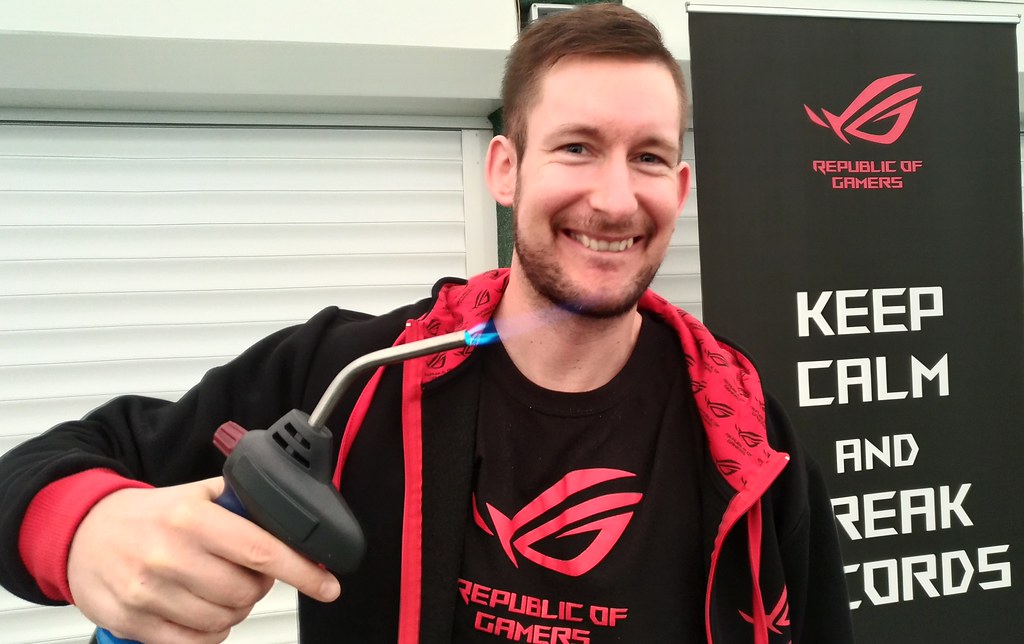
For Ryzen, I have not much LN2. Next time I will start with Ryzen and not with oldschool platform Ryzen setup was almost the same, I changed only OC panel for OC Panel II
Ryzen setup was almost the same, I changed only OC panel for OC Panel II 
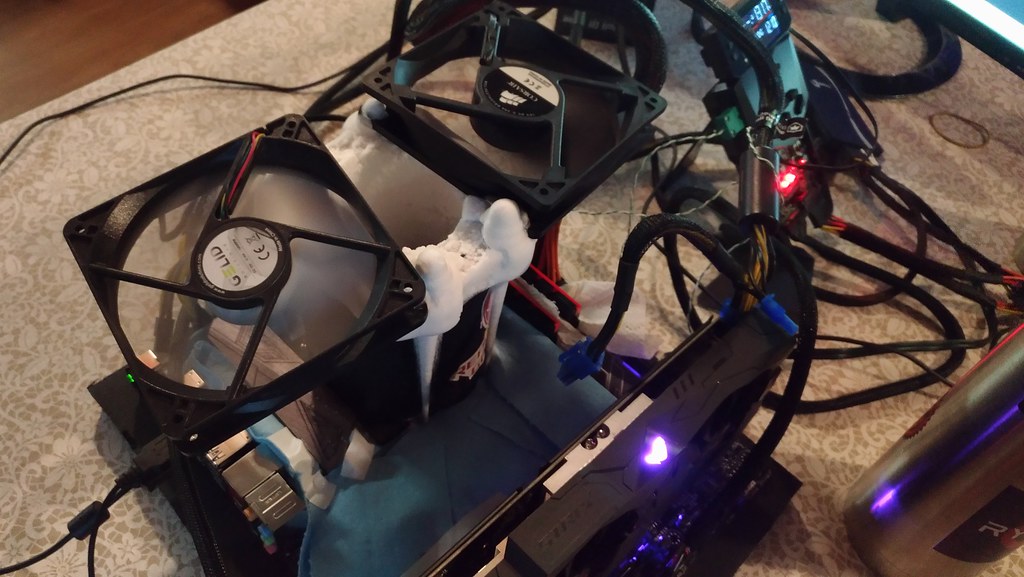
And I started with Cinebench R11.5. I found some interesting things. The CPU scaling very well with low voltage. I dont know, if is it normal, or abnormal with Ryzens. Example -120C, 1.44V and 4800 MHz Cinebench R11.5. I was surprised with this. Of course, the best way is start with lower BCLK and 2666 MHz RAMs, specially with low temperatures at CPU/SOC part.
But I tried step by step temps down and the lowest CPU/SOC voltage. Few times I got something as coldbootbug. If I was at -180 C at sensor and working in WIndows, everything was perfect. But if crashed it, I got code for CPU. If I warmed pot up to -150C, CPU was alive and booted But sometimes crashed CPU at the same temperatures around -180C and rebooted at -180C also...I dont know what exactly happens. It was my first experience with Ryzen and LN2...
But sometimes crashed CPU at the same temperatures around -180C and rebooted at -180C also...I dont know what exactly happens. It was my first experience with Ryzen and LN2...
Step by step I jumped up to 1.488V and last one nitrogen in thermos. 4950 MHz Cinebench R11.5 passed After I was without LN2 and temps goes up...So time for Superpi.
After I was without LN2 and temps goes up...So time for Superpi.
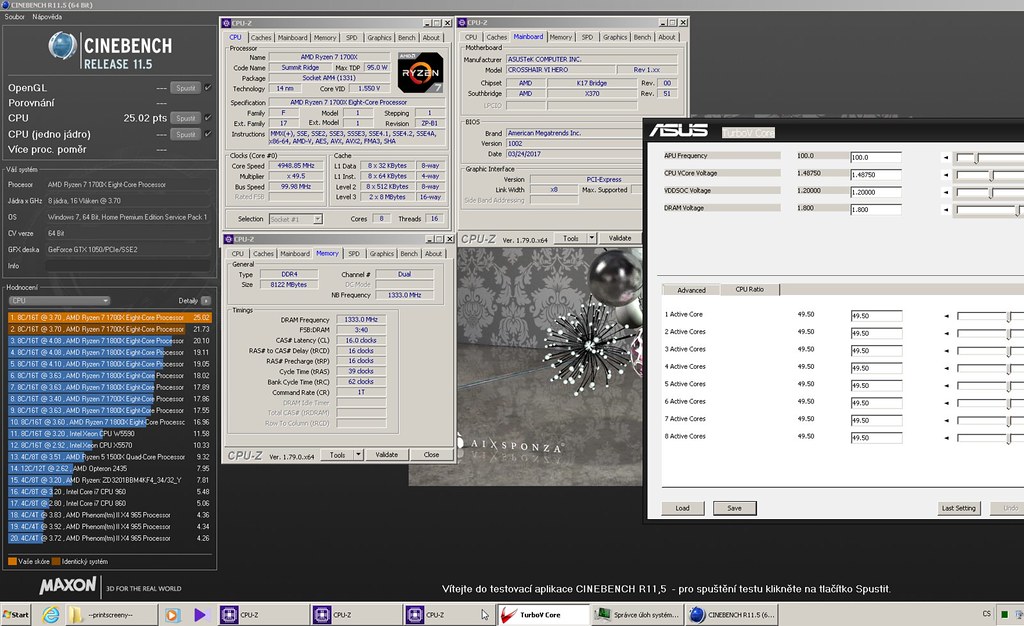
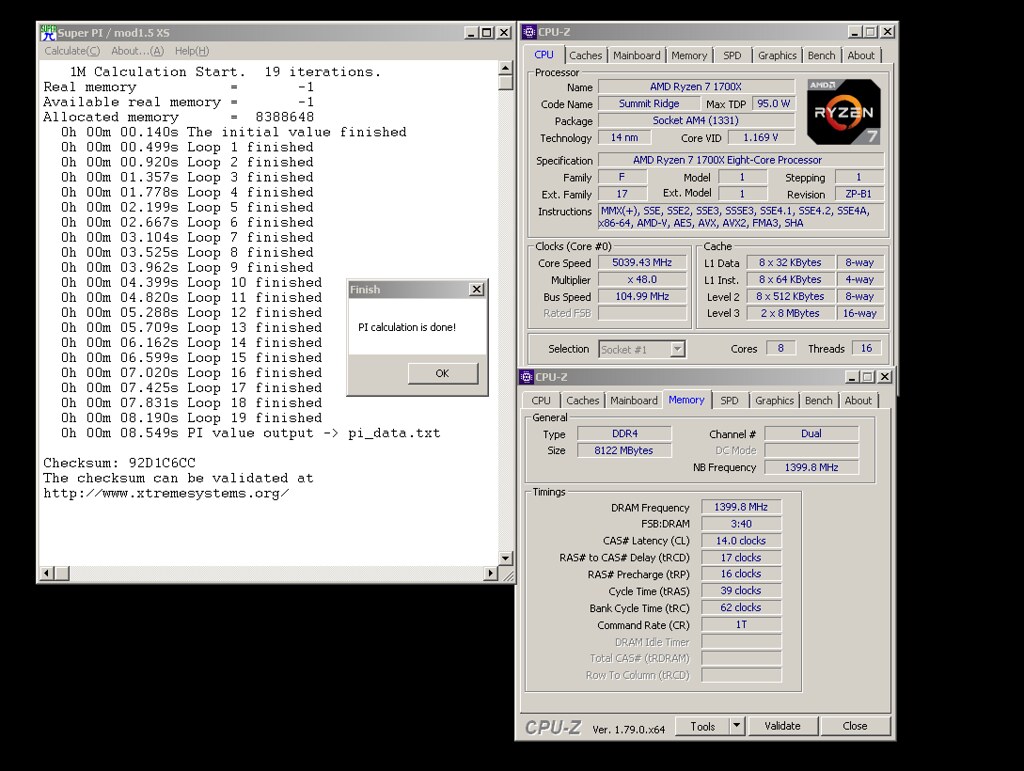
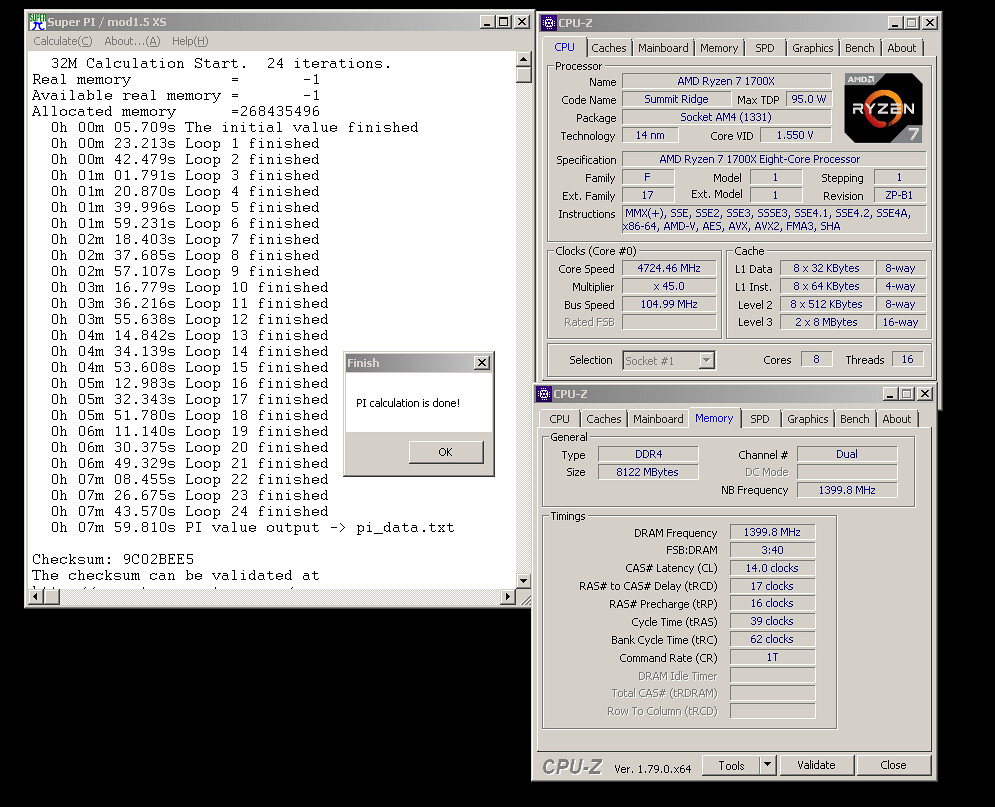
-srry without better DRAM clocks and DRAM timings - it was dry run without LN2
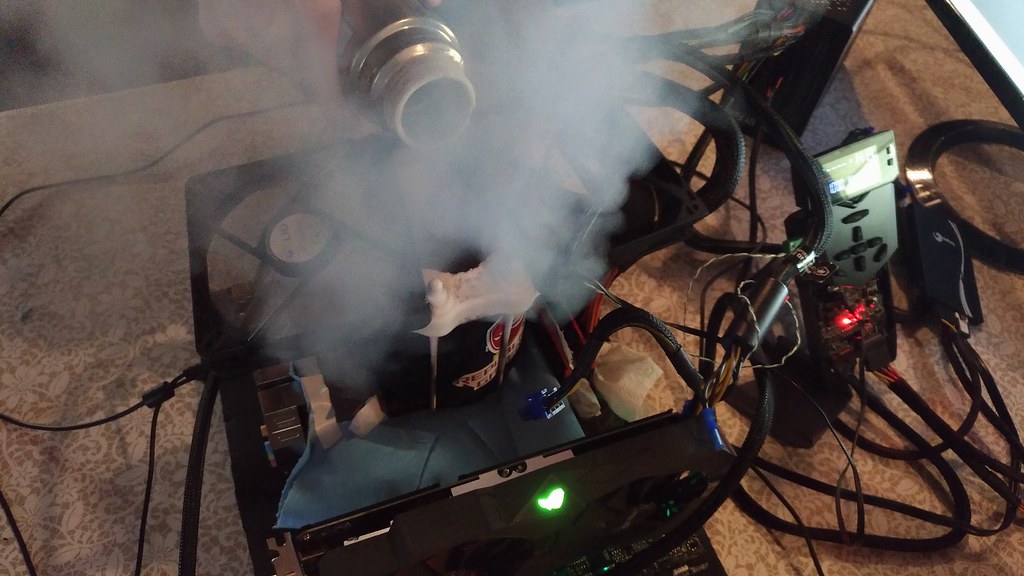
Ryzen was fun also, after few first experience and issues at start I was much smarter. Repetation of Ryzen in next 2-3 weeks guys! Hold my fingers! Il need it.





Everything what you need to know about Crosshair VI
 Clock generator is great info for us!
Clock generator is great info for us!Motherboard - new Crosshair
It was more clear, I must have some Ryzens and this motherboard. I was in silence, first BIOSes was not ideal and BIOS chip at my board was broked. Ryzen 7 1800X is my AIO rig. But I bought also Ryzen 5 1500X and Ryzen 7 1700X. And have borrowed 1700 non X + 1600. I tested quickly only 1800X and 1700X, a little 1500X.


The main benchtable PC - 1800X inside and Crosshair with Alphacool Eisbaer cooling. Type of DRAM Im using HyperX Savage, Corsair Dominators Vengeance or TridentZ from GSkill. Unfortunatelly, all kits are not B-die. My favourite BIOS for this board are 1001 and 1002.
Whats inside the box?

Many good stickers
 , SATA cabels, ROG SLI HB bridge, coaster for drink etc., discount for sleeve PSU cables, RGB extension cable, installing DVD, paper manual and IO cover
, SATA cabels, ROG SLI HB bridge, coaster for drink etc., discount for sleeve PSU cables, RGB extension cable, installing DVD, paper manual and IO cover
This is perfect inovation. Crosshair VI Hero has holes for AM3 and AM4 brackets
 .
. 
The board has solid digital power circuit, which is including phases for CPU=vcore+SOC part. In blue is it digi controlled 2 phases for DRAMs. Remember, if you are use Ryzen, it has 16x PCIe 3.0 links for GPUs and extra 4 directly for M.2 NVMe discs. Others PCIe are 2.0 and interconected with Promontory FCH chipset.

SupremeFX with latest ALC1120A codec, some Japanese cappacitors, ampfs and separated lines in PCB

Nice designed pasive of PCH. The board looks like really nice, similar as Maximus IX Hero sister. M.2 port is almost bottom, its smart, because its not between SLI/CF slots for GPUs. NVMe M.2 discs are a bit hot, specially in 512GB or higher capacity

Ryzen is supporting up to 64 GB DDR4 memory (A2+B2 are primary slots). Ussually you can use 3200 MHz, but at this Crosshair board its possible to get around 3600 MHz or higher for some benchmarks! But you must change BCLK and 2400/2666 MHz in BIOS
 Near the 24-ATX pin on the left you can see modern front USB3.1. In this area are measuring points of voltage. And post display.
Near the 24-ATX pin on the left you can see modern front USB3.1. In this area are measuring points of voltage. And post display.
OC part is at the bottom. Its change against Common opinion. I think, its better to have it on upper the right corner. Reason? If I will use for extreme OC last PCIe, after I have not good access to the buttons. At photo you can see classic START, small reset, safe and retry buttons, LN2 jumper and slow mode switch. Everything what the extreme overlcockers need to be happy. The board has support for ROG OC panels. And for casemoders there are also two RGB connectors.

IO part, so many USB ports, including 2.0, 3.0 and 3.1
 I like it. But one PS2 could be here also. Function buttons are BIOS flashback and clear CMOS.
I like it. But one PS2 could be here also. Function buttons are BIOS flashback and clear CMOS. Stock vs OC AIO cooled benchmarks



I tested only few benchmarks. But you can see big impact in IPC for AMD. Compared it with FX-8370 in table. I did also quick stable OC for 30min in AIDA. I got 4074 MHz with Ryzen 7 1800X. Benchmarks are doable at 4100 MHz also.


Crosshair IV Formula + AMD Phenom II X6 1090T BE and LN2
Few days ago I was at dealers day as ROG overclocker. I wanted test my favourite platform AMD Phenom II and new Ryzen. I started with old one, with Thuban. I must say, it was really fun and I used non tweaked Windows 7 for it.

Kingpins thermal paste for LN2. Its better than I thought.



Isolation with old classic method and many papers. I used also OC panel for read the temperatures and PCI post card into the motherboard.



Temperatures minus 186C was the max on sensor via OC Panel.
Time for some results. The cores of CPU was similar, the best cores was first, third and fifth. So for some benchamrks I could use mix of 5900 and 5800 MHz
 , example for Cinebenh R11.5. I was a bit disappointed from Superpi, I thought, this CPU could be 6500+ MHz chip, but it not happens...
, example for Cinebenh R11.5. I was a bit disappointed from Superpi, I thought, this CPU could be 6500+ MHz chip, but it not happens...Wprime 1024M and 32M

Cinebench R11 and R15


Superpi


Geekbench

Max clock ( I had almost 6500 Mhz, but file is corupted)


That was my Thuban
 And Chew* has the right in this case. This sample is really great on AIR, but only good at LN2...My 1100T BE is with LN2 better extra 300 MHz. Still, it was fun and most of liters was consumed by Thuban
And Chew* has the right in this case. This sample is really great on AIR, but only good at LN2...My 1100T BE is with LN2 better extra 300 MHz. Still, it was fun and most of liters was consumed by Thuban  ¨
¨AMD Ryzen 7 1700X and LN2

For Ryzen, I have not much LN2. Next time I will start with Ryzen and not with oldschool platform
 Ryzen setup was almost the same, I changed only OC panel for OC Panel II
Ryzen setup was almost the same, I changed only OC panel for OC Panel II 

And I started with Cinebench R11.5. I found some interesting things. The CPU scaling very well with low voltage. I dont know, if is it normal, or abnormal with Ryzens. Example -120C, 1.44V and 4800 MHz Cinebench R11.5. I was surprised with this. Of course, the best way is start with lower BCLK and 2666 MHz RAMs, specially with low temperatures at CPU/SOC part.
But I tried step by step temps down and the lowest CPU/SOC voltage. Few times I got something as coldbootbug. If I was at -180 C at sensor and working in WIndows, everything was perfect. But if crashed it, I got code for CPU. If I warmed pot up to -150C, CPU was alive and booted
 But sometimes crashed CPU at the same temperatures around -180C and rebooted at -180C also...I dont know what exactly happens. It was my first experience with Ryzen and LN2...
But sometimes crashed CPU at the same temperatures around -180C and rebooted at -180C also...I dont know what exactly happens. It was my first experience with Ryzen and LN2...Step by step I jumped up to 1.488V and last one nitrogen in thermos. 4950 MHz Cinebench R11.5 passed
 After I was without LN2 and temps goes up...So time for Superpi.
After I was without LN2 and temps goes up...So time for Superpi.


-srry without better DRAM clocks and DRAM timings - it was dry run without LN2


Ryzen was fun also, after few first experience and issues at start I was much smarter. Repetation of Ryzen in next 2-3 weeks guys! Hold my fingers! Il need it.



